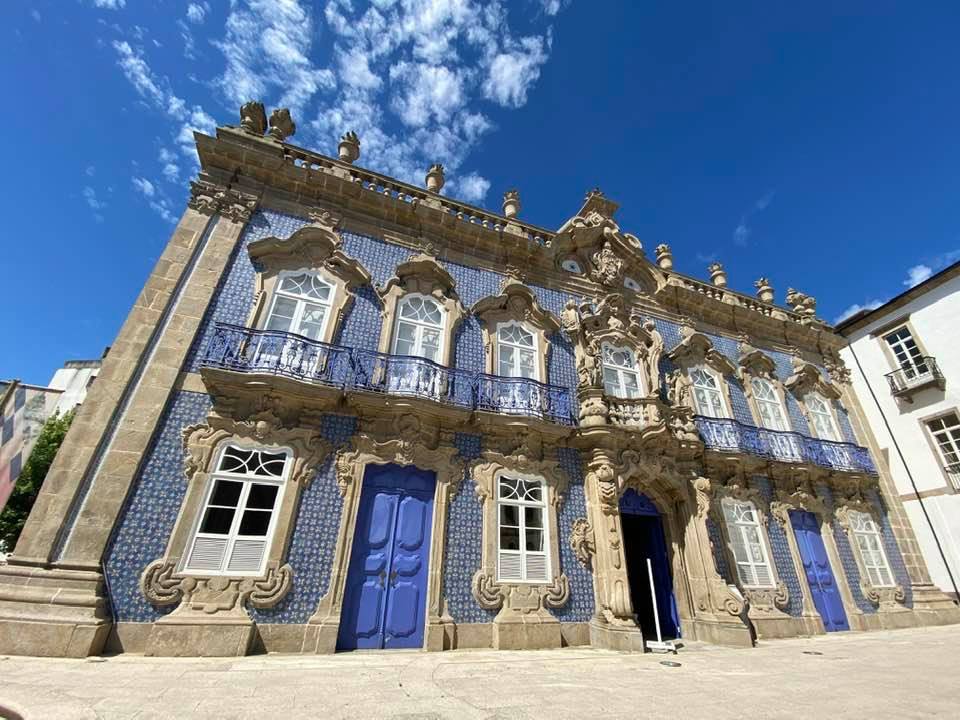Braga is one of the oldest and picturesque Portuguese cities. Its heritage goes back to Roman times, when “Bracara Augusta” was built more than 2,000 years ago, and there are many impressive historical buildings, museums and festivals where visitors can rediscover this heritage. It is also considered the religious center of Portugal because for centuries the archbishops were holders of both temporal and spiritual power.
In addition to the 2,000 years of history, one can also find a range of modern architecture, lending the historic city the youthful vibrancy and unexpected modernity that has led it to be considered Portugal’s youngest city.
In Braga you will find everything for your taste: gastronomy, history, art, and a rich display of culture. For the museum lovers, here are five museums you cannot miss while visiting Braga.
1. Raio Palace
Built during the reign of king João V (1706-50), this is a wonderful example of Baroque civil architecture and designed by André Soares for José Duarte de Faria. He was a knight of the Order of Christ in addition to being a highly influential trader. In 1834, the property was purchased by Miguel José Raio, Viscount of São Lázaro who is believed to have bestowed the name House or Palace of Raio. Presumably in 1867, the palace was sold to the entrepreneur Miguel José Raio, and after a while the Palace became known as the Raiu Palace. Later, the building passed to the Order of Mercy, which housed the separate rooms of the Hospital of St. Mark in the palace.
A room dedicated to the objects from the time a hospital used to function at the Raio Palace until it was returned to the Santa Casa in 2012 can be observed at the entrance. In terms of adornment, there is the tile covered façade, wonderful banisters embellished with flame effects and amphoras, and the verandas in forged iron and worked granite. The inner staircase is also worthy of note.
2. D. Diogo de Sousa Regional Museum
The collection of the D. Diogo de Sousa Regional Museum includes archaeological finds from across the Braga region. The collection covers vast chronological and cultural periods stretching from the Palaeolithic through to the Middle Ages.
The Roman pieces are particularly impressive including tombstones and articles revealing the daily lives of people from Bracara Augusta to Rome. There is also a highly rated medieval burial section.
The museum was named in honor of archbishop Diogo de Sousa and his work after taking office in 1512 towards expanding and improving the city and its infrastructures.
3. Tesouro da Sé Museum
The idea of setting up a Museum of Religious Art was first put forward by archbishop Manuel Vieira de Matos in 1930. It was installed in the House of Cabido, built in the 18th century by archbishop Rodrigo de Moura Teles.
The museum collection includes ceramics, furniture, jewelry and textiles. Its extensive range includes such highlights as a 17th century portable organ acquired by archbishop Luis de Sousa, 16th century ceremonial dress donated by king Manuel to archbishop Diogo de Sousa, and a 18th century silver and gold plated custodial set with 450 diamonds.
4. Biscaínhos Museum
The Biscaínhos Museum is located in a beautiful residential Palace of a form noble family, who built it in the 17th century. This wonderful example of civil Barroque architecture style demonstrates what Baroque society was like in a noble residence with the original state of the various buildings preserved.
In the house, there is an exhibition of 17th and 18th century art mostly built up from private donations of Baroque furniture and ceramics, Chinese porcelain, European glasswork, silverware, textiles in addition to Portuguese and European paintings. The gardens, inspired by 18th century French fashions, are some of the best preserved and most complete examples of the Baroque period.
5. Nogueira da Silva Museum
The Nogueira da Silva Museum contains the legacy bequeathed by the entrepreneur Nogueira da Silva to the University of Minho. The magnificent building stands in the center of Braga and has gardens designed in French style.
Nogueira da Silva was a well-known philanthropist who also had a passion for art. He accumulated an invaluable collection which included many rare pieces of furniture, paintings, and sculptures from various periods and styles. The museum comprises significant Renaissance pieces, Portuguese painting, 17th furniture, ceramics and creations in ivory, silver and religious art.













